► New E450d engine for E-Class
► Straight-six diesel engine
► Produces over 380bhp
We’ve got a lot of time for the latest Mercedes Benz E-Class estate here at CAR. It’s even won a few over who haven’t often danced to the beat of the Mercedes drum in recent years. This latest generation model is comfortable, refined and hugely practical thanks to that elongated rear end, but what about performance?
The E200 and E220d engines are efficient, but they’re rather weak, and unlikely to inspire any great affection. The plug-in hybrids do a little better with a blend of combustion and electric power in shrew tandem, topping 315bhp in the E300e, but a mid-temp powerhouse engine hasn’t been offered. That is, until now. Merc has just introduced a new range-topping six-cylinder with 385bhp to the lineup, and a diesel at that.
That’s right. A straight-six diesel in a big executive wagon. Stick your zeitgeist up your tailgate.
Called the E450d, the big new engine now tops the E-Class model list by some margin. On paper it puts the other power units, and especially the non-plug-in hybrids, to shame, but does it work on the road? An agonizing reminder of what we’ll miss when they’re gone or just a museum piece broken out for one last joyride?
Read on to find out, along with a full review of the 2024 Mercedes E-Class Estate. To find out how we reached our verdict, head over to our how we test cars page.
At a glance
Pros: Powerful diesel is excellent, show-stopping interior, outstanding refinement
Cons: Abundance of tech can be fiddly, expensive, smaller boot on the PHEV
What’s new?
The E450d is a new engine on the E-Class line. It’s a straight-six unit, supported by a 22bhp mild-hybrid system, that powers all four wheels. The estate starts from £81,530 in AMG-Line trim or Exclusive Premium for the same price, but with this engine, the car comes with all-round air suspension as standard.
The new power unit is hooked up to the same nine-speed automatic gearbox as the rest of the engines on offer, but it can get the car going at a far quicker rate. 0-62mph takes just five seconds, while top speed gets a bump up to 155 mph. Boot capacity is the same you’ll find in the other non-plug-in hybrid variants, with 615 litres offered seats up, or 1,830 seats down.
As for the latest E-Class as a whole, it feels more like an S-Class than ever, and borrows lots of that luxury car’s technology. You’ve got a huge 14.4-inch touchscreen as standard and an optional ‘Superscreen’ that essentially makes the entire dashboard an entire digital surface, with the front-seat passenger even getting their own touchscreen. Not that we’re sure they need to.
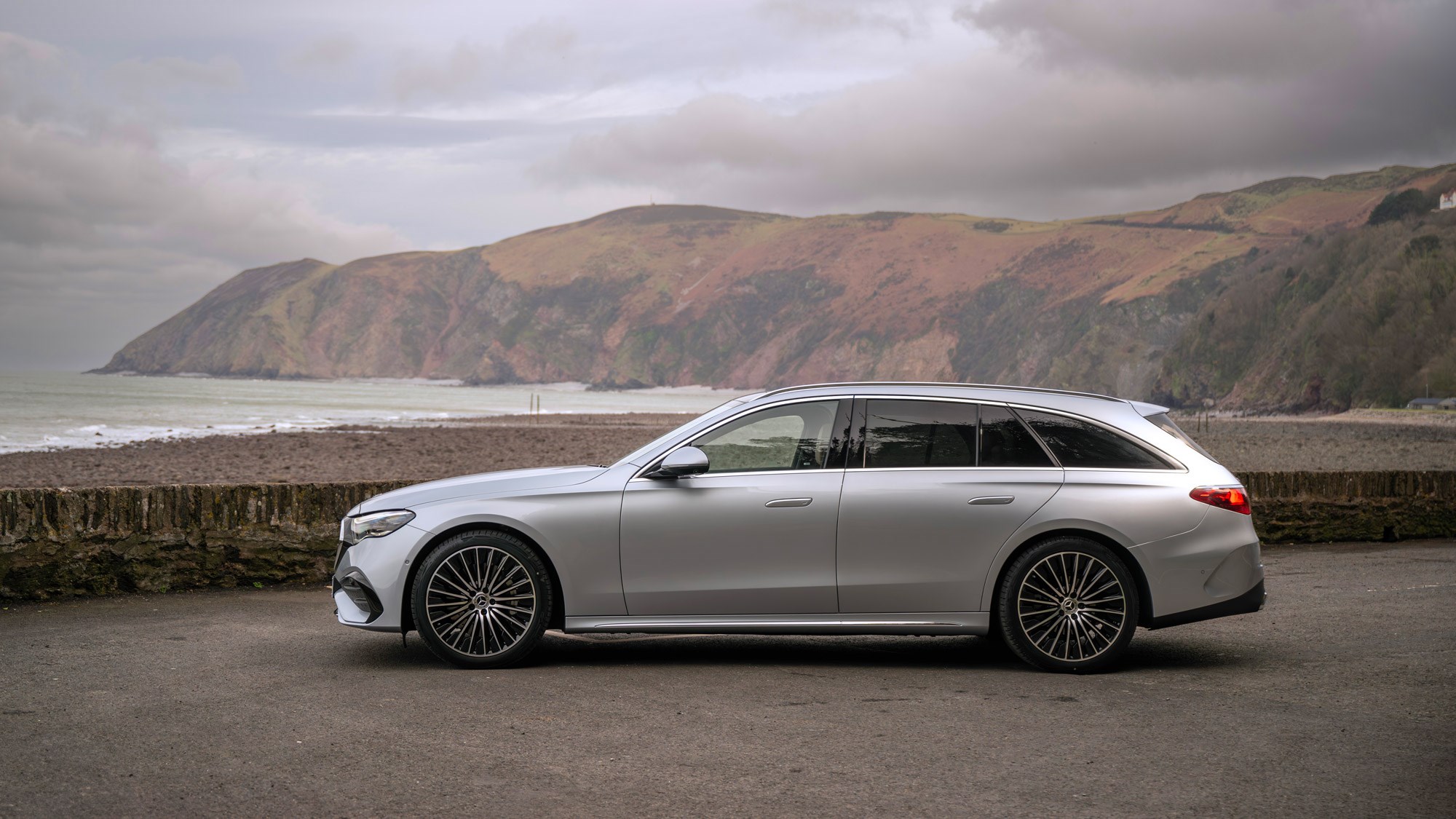
It’s a massive tech fest on top-spec models especially, with full ambient lighting that changes to the music and even seats that vibrate to the stereo’s bass. Add into that a new program that aims to help passengers with car sickness by automatically adjusting the seats and, I quote, ‘release bursts of air’ into their faces to help. It’s a lot.
Dimensions are broadly the same as before but in a bid to make estate cars a bit more desirable, it has a more sloped rear end. It’s no CLS Shooting Brake but gives it a more rakish look with only a tiny penalty for boot space. Mercedes has been getting increasingly chintzy in recent years and a new light-up grille surround has been fitted as a result. Dear Mercedes, you don’t need to copy BMW.
What are the specs?
Choice is central to the appeal of the E-Class, with petrol, diesel and two plug-in hybrids available. There will also be new AMG 53 models too. If it’s not a PHEV, it’ll be a mild-hybrid too, and all use a nine-speed automatic gearbox.
The only petrol is a 201bhp 2.0-litre petrol (E200) with diesel choice consisting of the 2.0-litre E220d and E450d. The latter sounds dreamy on paper; a 362bhp 3.0-litre diesel with four-wheel-drive and standard air suspension (the only version you get it as standard on) and a 5.0-second 0-62mph time combined with 45mpg. But here we’re in the standard E220d.
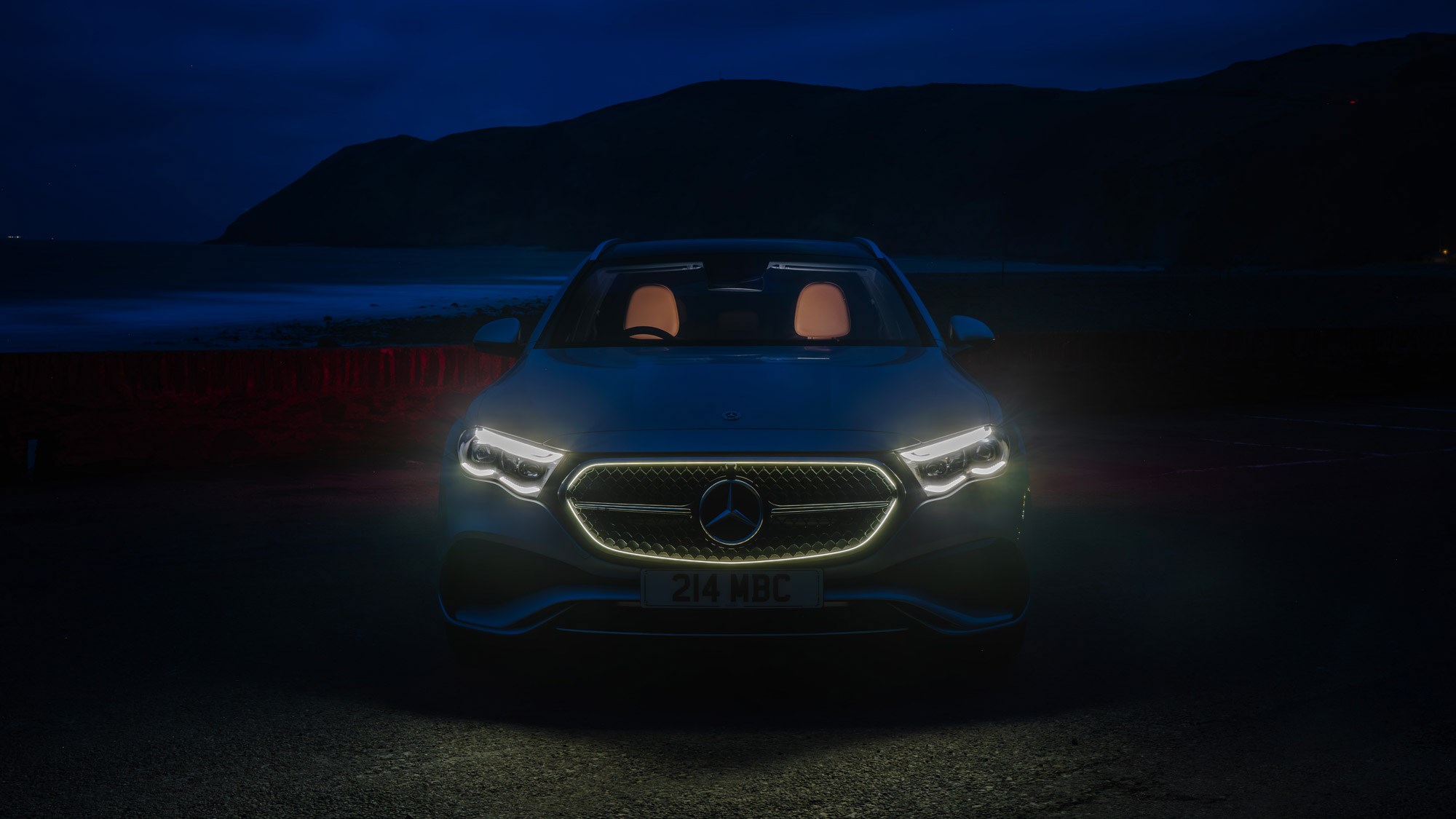
With 194bhp, it’s the least powerful E-Class you can buy, but makes up for that with its plentiful 440Nm of torque, with 0-62mph taking 7.9 seconds and a max speed of 143mph. It’s the ultimate mile-muncher, with its big 66-litre fuel tank and claimed 56mpg (though we saw higher on a motorway run) equating to a possible range of 1,000 miles.
Most buyers, however, will be company car buyers and choose one of the plug-in hybrids, either the E300e petrol or E300de – Mercedes now being the only firm to sell derv PHEVs. They’re nothing hugely special in terms of performance, but courtesy of a big 25.4kWh battery can travel up to 68 miles on electricity and also be rapid charged. They’re not far off being the best company cars.
What’s it like to drive?
When CAR reviewed the E-Class saloon earlier in the year, we were left disappointed. It was neither as comfortable nor refined as we’ve come to expect from Mercedes’ executive model. This estate car is, surprisingly, a big improvement.
The ride is still not silky-smooth but is an improvement, and especially considering our car’s 20-inch alloy wheels. It’s likely helped by the rear axle coming on single-chamber air suspension that works to keep the car level even if you have the boot laden with paving slabs (or more likely, luggage) as it has a more supple edge to it than before. It can still get unsettled on the roughest roads or the biggest of bumps but it’s a massive improvement.
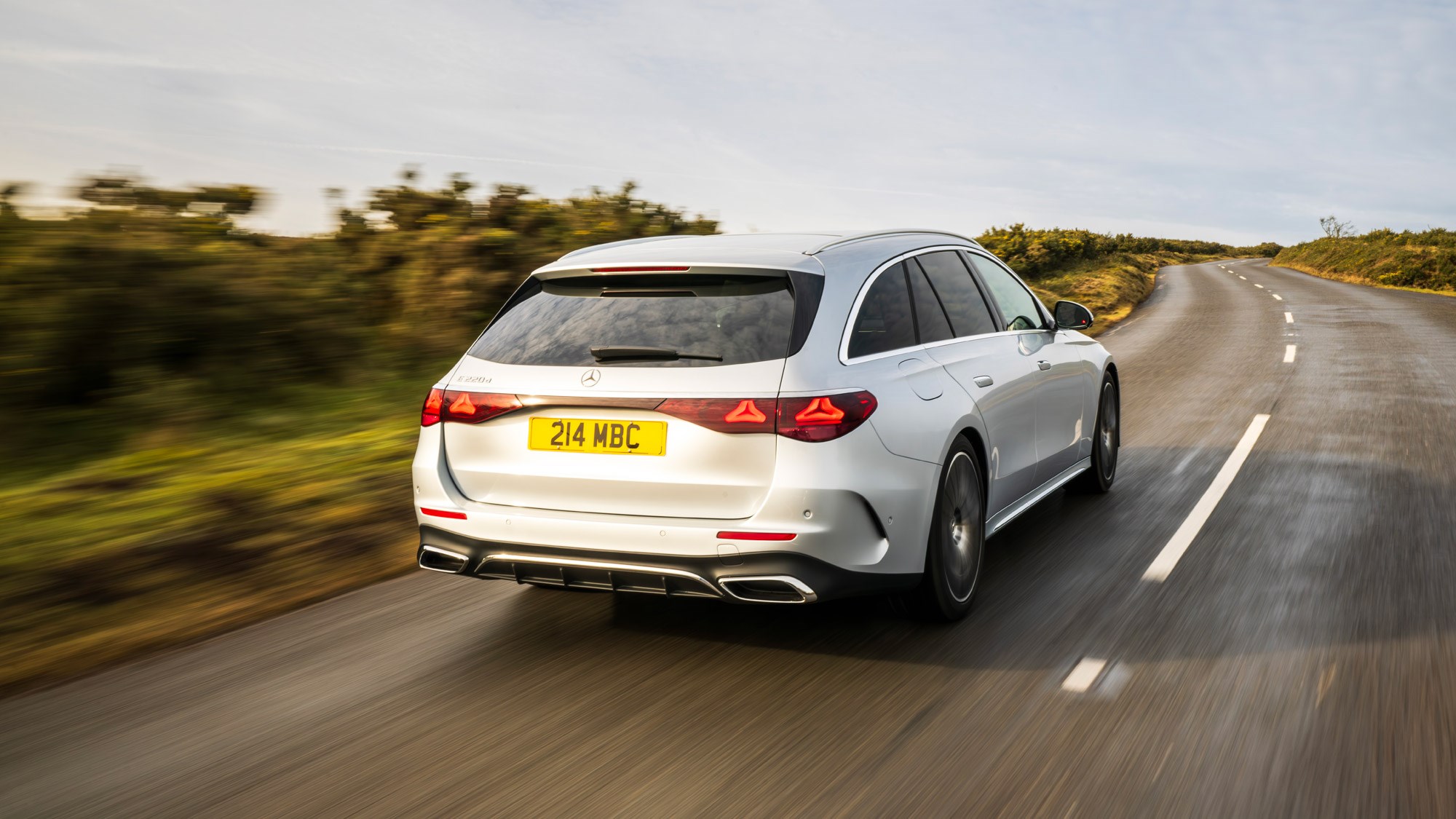
In typical E-Class fashion, refinement is exemplary. Helped by an acoustic windscreen, wind and road noise are kept to an absolute minimum and though the E220d is a bit gruff on full throttle – and probably not the best match – once up to speed it’s especially hushed.
But what about this new E450d? We’re happy to report that the engine is fantastic. It serves power up effortlessly, with a nice linear surge from the bottom of the rev range to the top. As a diesel, it produces a wealth of torque – 553ftlbs to be exact – which translates to enormous pulling power in any gear at almost any time.
Finished off with a sumptuous baritone soundtrack at the top end – not too raucous, not too quiet – and it’s an engine to savour. The only catch is fuel economy. Mercedes quotes a combined range in the mid 40s, but we could only manage around 27mpg, albeit after a relatively short drive.
Mercedes’ driver assistance tech is among the best around, with a lane assist that only interrupts things when it really needs to and a superb adaptive cruise control that actually drives how a normal functioning human does. It all lends itself to the supreme motorway cruiser that the E-Class is. Need to drive to southern Europe tomorrow? There probably is no finer car for the job.
What’s the interior like?
From a visual point of view, it’s sensational. All manner of fancy materials and textures come together to form a cabin that really does wow. All E-Class Estates get a huge 14.4-inch touchscreen that is properly integrated into the dashboard, rather than looking like an afterthought, with an optional passenger screen also available.
But when you start interacting with the cabin itself, the quality can’t quite live up to the original aesthetic. Some of the metal-effect trim feels cheap, and you can’t help but think it’s a touch superficial. The tan leather seats are wonderfully comfortable and supple, but are quite flat and not the most supportive if you want to get your foot down.
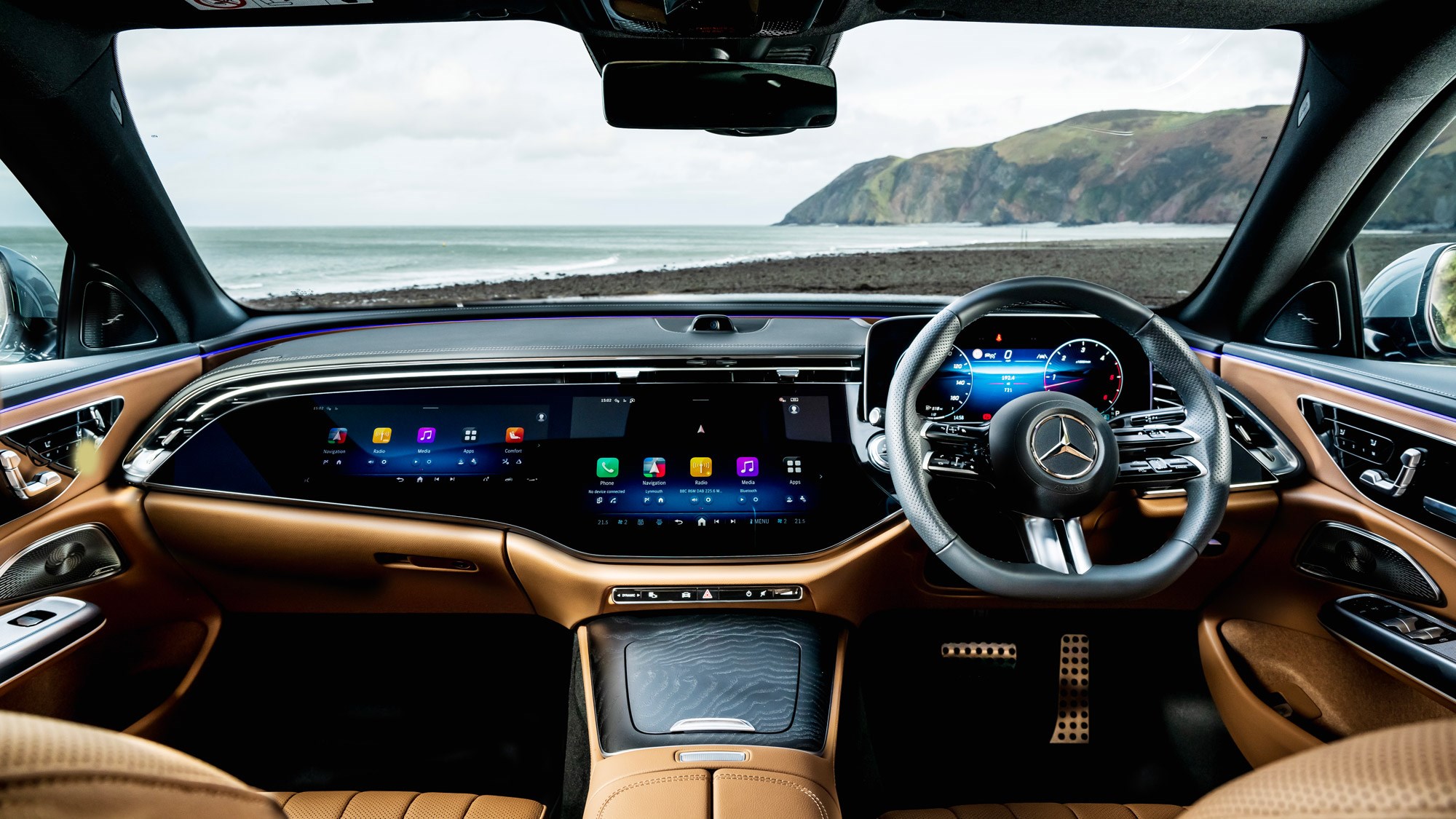
The younger generation is clearly Mercedes’ focus at the minute. You can watch TikTok through that massive screen when stopped, stream YouTube and even take selfies through the Big Brother-like interior camera. If you’re 21, it’s probably great, but are Gen Z’ers really buying an E-Class Estate?
It’s still massively spacious, too, and perhaps except for a Skoda Superb Estate, there isn’t a more practical wagon on the backet. Rear passengers have acres of space to stretch out in, even with a panoramic sunroof fitted, and the boot is huge at 615 litres, if slightly down on its predecessor owing to its more rounded styling. Be mindful of the considerably smaller boot on the PHEV, though, and its irritating ridge owing to having to fit that huge battery beneath the floor.
Before you buy
To me, an E-Class Estate should be about a £45,000 car, but that’s well out of touch as Mercedes has racked up the price for all this fancy tech. It now starts at £57,580 for a petrol, £59,120 for a diesel and £66,680 for a plug-in hybrid. A top-spec diesel is knocking on £80,000.
Standard kit is pretty generous, including heated and electric front seats, park assist and blind spot monitoring. As you rise through the ranks you get the ability to unlock the car with your iPhone, a wonderful Burmester sound system and a head-up display.
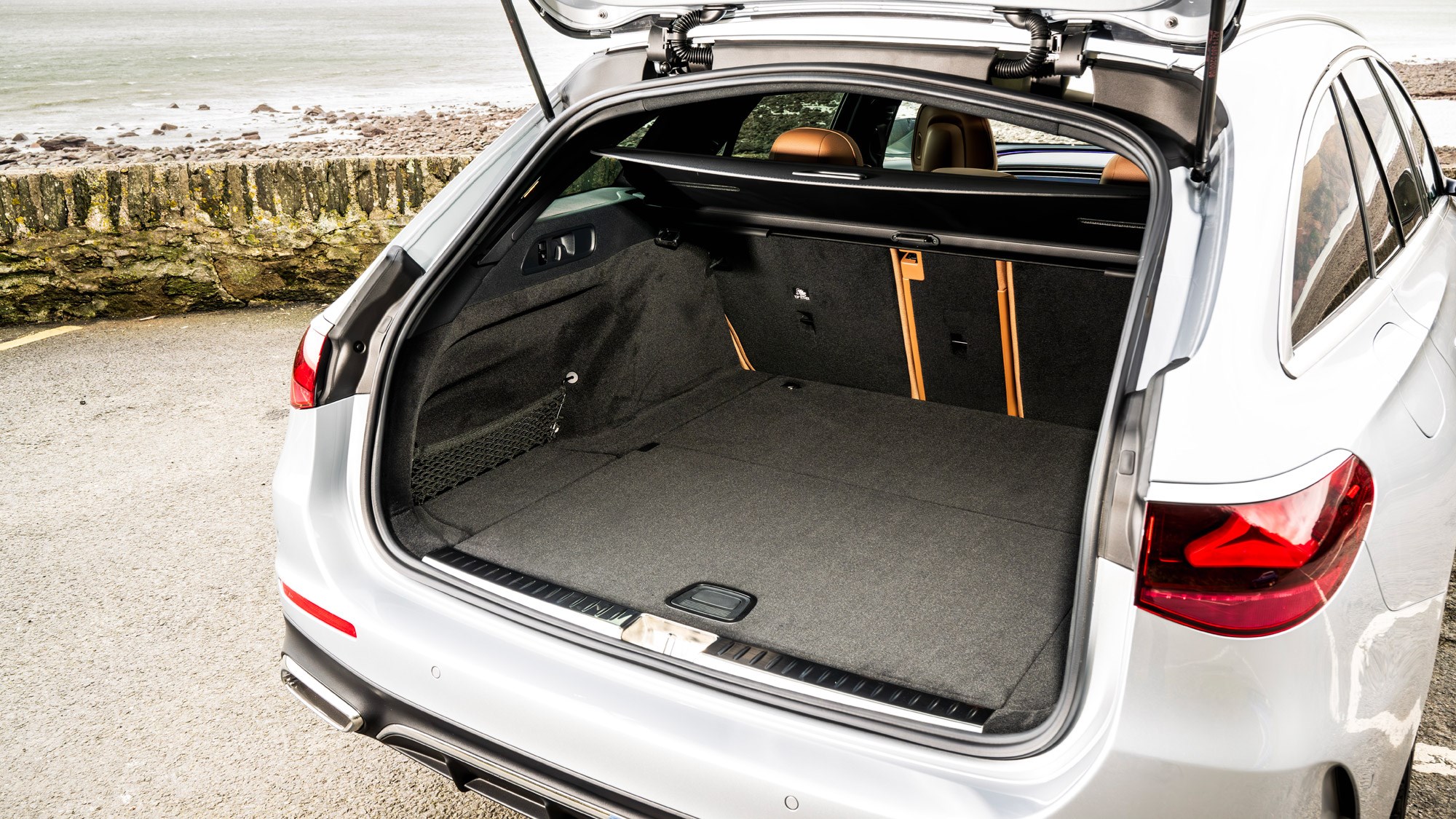
The E-Class is also one of few modern Mercedes’ that you can get without a default AMG Line trim, with a more premium-looking ‘Exclusive’ trim offered. It gets a Maybach-like grille and the Mercedes emblem as a three-pointed star on the bonnet like the good old days.
Verdict
The E-Class Estate is up there as one of the best cars Mercedes currently makes. Wonderfully spacious, upmarket and loaded with tech (too much, you could argue), it’s an executive estate car that certainly makes an impression.
As for the new e450d diesel, it’s a gloriously refined and dignified engine that puts an enormity of power in your hands. If you’re looking for one last blast in a new ICE car before the 2030 internal combustion ban then this one underscores the greatest virtues of big diesel engines. If you’re looking to save on running costs, we’d recommend opting for another in the lineup.
A broad engine choice, supreme refinement and the brilliant electric range of the PHEVs mean that it’s a car that ticks all the right boxes. If you want to do the right thing and buck the SUV trend, the E-Class could be the way to go, and is certainly is among the best estate cars you can buy.
Specs are for Mercedes E220d Estate AMG Line Premium Plus